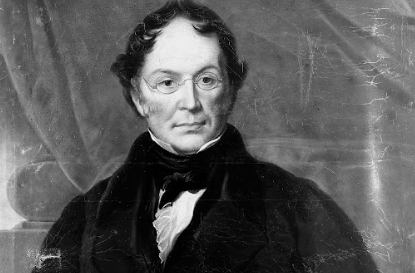
British physician made an important contribution to the study of mental illnesses; at the end of his life he also refined the Monro-Kellie Doctrine concerning intracranial pressure (ICP)

One of the forerunners in the study of human insanity, British physician George Burrows (06/05/1771-29/10/1846) was born in the village of Chalk, near Gravesend. He was apprenticed to a pharmacist in Rochester, and completed his medical education at Guy ’s and St. Thomas hospitals. After qualifying at the College of Surgeons and Apothecaries Hall, he entered general practice in London.
With a special interest in improving the education as well as the legal and legal status of the medical profession, Burrows organized the Association of Apothecary Surgeons of England and Wales. As president of this body, he dedicated himself with zeal and played a large part in the movement that led to the approval of the Apothecary’s Law in 1815.
In 1815, he decided to devote himself entirely to the mentally ill. He took over the management of a small private asylum in Chelsea, leaving it in 1823 for the ‘Retreat’ of Clapham, the medical center where he worked until 1843.
International experience
Between 1817 and 1822, Burrows visited Parisian establishments with psychiatric patients and deepened his studies in the works of the French school on insanity. In Britain, he was the first to publicize Bayle’s and Calmeil’s theories about the general paralysis of the insane.
In 1819 he wrote one of the most complete treatises on psychiatry of the time: “Superficial remarks on the legislative regulation of the insane.” The following year, he launched “An investigation into certain errors relating to insanity and its physical, moral and civil consequences”, and in 1828, he edited the most relevant work on madness published so far, “Comments on the causes, forms, symptoms and moral and medical treatment of insanity”.
Cranial component
In 1846, the same year of his death, Burrows made another contribution to medicine: he questioned the concept of fixed blood volume, until then one of the pillars of the Monro-Kellie Doctrine. Regarding intracranial pressure (ICP), this scientific hypothesis was formulated in 1783 by Scottish surgeons Alexander Monro and his disciple George Kellie, and only revised in the 21st century.
The original concept of the Monro-Kellie Doctrine suggested that an adult’s healthy cranial cavity is rigid and maintains a constant volume balance, with the brain being nearly incompressible. Thus, any increase in the mass of a cranial constituent formed by blood (10%), CSF (10%) and brain tissue (80%) is compensated by a decrease in the volume of another.
After several experiments with animals, Burrows found that there was a reciprocity relationship between the intracranial blood volume and the CSF volume, with an increase in one leading to a reduction in the others. Thus, the liquor component came to be considered in the Monro-Kellie Doctrine, which came to be called by some authors as Monro-Kellie-Burrows.
Sources





